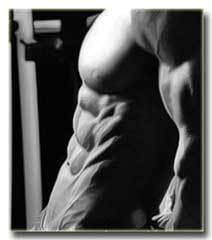Since the other one got sidetracked, I’ll take the opportunity to start from the beginning...
Let me throw up a disclaimer: Nothing posted in this thread is intended to be portrayed as either an absolute truth, or the only possible option. Do what you like, figure out what you like, what works for you, and use whatever means you want to justify your choice. This is information I've found from Olympic level coaches, physiologists, and the like, because I'm a huge nerd and exercise physiology just happens to be an area that interests me.
Disclaimer #2: If you don't like lifting, don't want to lift, or feel superior to those who lift, all the methods of stressing the body presented here are easily replicated without resistance training, but the effectiveness may vary.
I’ll try to include all the basic science, while providing basic interpretations. If something doesn’t seem clear, I’ll be happy to readdress it.
First things first, weight loss does not equal fat loss. Many people lose weight, and just end up a smaller fat person. While diet is the most important factor to weight loss, excess calorie reduction is indiscriminate, and the body will burn both fat and muscle when starved. Everything I'm posting is based on the assumption that the athlete wants to maintain as much muscle (strength) as possible while reducing bodyfat.
Most bodybuilders don't use these methods, because a crash diet will cut weight faster, and the loss of strength isn't an issue. This is also why the high rep for weight loss myth started, because the BBers lost the strength for heavy work, but still needed time under tension to maintain size, which was attained through high rep work. Recent trends for BBers and strength athletes have shifted towards less of a 'bulk' period, which means less of a cut, and some of these techniques are included in some routines.
Most endurance athletes don't use these methods, because they are training long and hard enough to achieve the same body composition goals without needing to focus on reaching a catabolic state.
Basic physiology and vocabulary first:
Catabolic: breaking down complex molecules to simpler molecules to access energy. (burning tissue for fuel)
Anabolic: the process of building tissue from simple nutrients. (growing muscle from fuel)
Aerobic: involving oxygen consumption. (breathing for fuel)
Anaerobic: existing without oxygen (accessing fuel without oxygen)
Metabolism: the consumption of nutrients needed to function.
EPOC: Excess Post-exercise Oxygen Consumption
Body composition: purely based on body fat percentage, which has nothing to do with weight.
HIIT: High Intensity Interval Training
Let me throw up a disclaimer: Nothing posted in this thread is intended to be portrayed as either an absolute truth, or the only possible option. Do what you like, figure out what you like, what works for you, and use whatever means you want to justify your choice. This is information I've found from Olympic level coaches, physiologists, and the like, because I'm a huge nerd and exercise physiology just happens to be an area that interests me.
Disclaimer #2: If you don't like lifting, don't want to lift, or feel superior to those who lift, all the methods of stressing the body presented here are easily replicated without resistance training, but the effectiveness may vary.
I’ll try to include all the basic science, while providing basic interpretations. If something doesn’t seem clear, I’ll be happy to readdress it.
First things first, weight loss does not equal fat loss. Many people lose weight, and just end up a smaller fat person. While diet is the most important factor to weight loss, excess calorie reduction is indiscriminate, and the body will burn both fat and muscle when starved. Everything I'm posting is based on the assumption that the athlete wants to maintain as much muscle (strength) as possible while reducing bodyfat.
Most bodybuilders don't use these methods, because a crash diet will cut weight faster, and the loss of strength isn't an issue. This is also why the high rep for weight loss myth started, because the BBers lost the strength for heavy work, but still needed time under tension to maintain size, which was attained through high rep work. Recent trends for BBers and strength athletes have shifted towards less of a 'bulk' period, which means less of a cut, and some of these techniques are included in some routines.
Most endurance athletes don't use these methods, because they are training long and hard enough to achieve the same body composition goals without needing to focus on reaching a catabolic state.
Basic physiology and vocabulary first:
Catabolic: breaking down complex molecules to simpler molecules to access energy. (burning tissue for fuel)
Anabolic: the process of building tissue from simple nutrients. (growing muscle from fuel)
Aerobic: involving oxygen consumption. (breathing for fuel)
Anaerobic: existing without oxygen (accessing fuel without oxygen)
Metabolism: the consumption of nutrients needed to function.
EPOC: Excess Post-exercise Oxygen Consumption
Body composition: purely based on body fat percentage, which has nothing to do with weight.
HIIT: High Intensity Interval Training




Comment